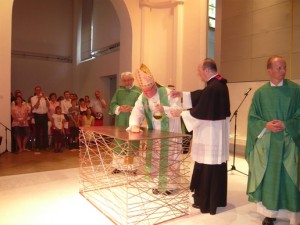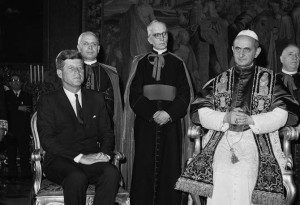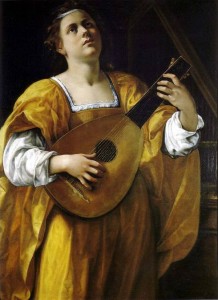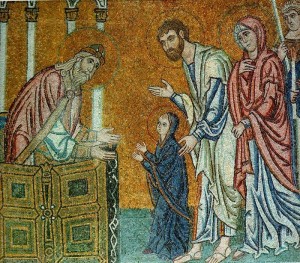As mentioned yesterday, Pope Francis went to the monastery of Saint Anthony the Abbot, the home of the Camaldolese Benedictine nuns on the Aventine (Rome). There he was welcomed by Sister Michela Porcellato, the religious superior of 21 nuns.
The occasion of his presence among these contemplative nuns was to honor the Day for Contemplative Life (instituted in 1953 by Pope Pius XII as the Pro Orantibus Day); it also was one to the marks of the end of the Year of Faith.
Vespers was sung according to the Camaldolese tradition followed by a moment of Eucharistic Adoration. Francis gave the following meditation with some important points emphasized by me:
We contemplate Her who knew and loved Jesus as no other creature. The Gospel we heard shows the fundamental attitude with which Mary expressed her love for Jesus: to do the will of God. “Whoever does the will of my Father in Heaven is my brother, and sister, and mother” (Matthew 12:50). With these words, Jesus leaves an important message: the will of God is the supreme law that establishes true belonging to Him. Therefore, Mary established a bond of kinship with Jesus even before giving him birth: she became a disciple and Mother of her Son the moment she received the words of the Angel and said: “Behold, I am the handmaid of the Lord; let it be to me according to your word” (Luke 1:38). This “let it be” is not only acceptance, but also trustful openness to the future. This “let it be” is hope!
Mary is the Mother of hope, the most expressive icon of Christian hope. Her whole life is an ensemble of attitudes of hope, beginning with the “yes” at the moment of the Annunciation. Mary did not know how she could become a mother, but she entrusted herself totally to the mystery that was about to take place, and she became the woman of waiting and of hope. Then we see her at Bethlehem, where he who was announced as Savior of Israel and as Messiah is born in poverty. Then, while she is at Jerusalem to present him in the Temple, with the joy of the elderly Simeon and Anna, she hears the promise of a sword that will pierce her heart and the prophecy of a sign of contradiction. She realizes that the mission and the identity itself of that Son exceed her being Mother. We then arrive at the episode of Jesus who is lost in Jerusalem, and she asks: “Son, why have you treated us so?” (Luke 2:48), and Jesus’ answer, who moves away from the maternal concerns and turns to the things of the Heavenly Father.
Yet, in face of all these difficulties and surprises of God’s plan, the Virgin’s hope never hesitates! Woman of hope. This tells us that hope is nourished by listening, by contemplation, by patience, so that the times of the Lord will mature. Also at the Wedding of Cana, Mary is the Mother of hope, which makes her attentive and solicitous to human things. With the beginning of his public life, Jesus becomes the Teacher and the Messiah: Our Lady looks at her Son’s mission with exultation but also with apprehension, because Jesus becomes increasingly the sign of contradiction that the elderly Simeon had pre-announced to her. At the foot of the cross, she is the woman of sorrow and at the same time of vigilant waiting of a mystery, greater than the sorrow, which is about to take place. Everything seems truly finished; every hope it could be said was spent. At that moment, recalling the promises of the Annunciation, she also could have said: they have not come true, I was deceived. But she did not say it. Yet she, blessed because she believed, sees blossom from her faith the new future and waits with hope for God’s tomorrow. Sometimes I wonder: are we able to wait for God’s tomorrow? Or do we want it today? For her God’s tomorrow is the dawn of the Easter morning, of that first day of the week. It would do us good to contemplate the Son’s embrace with the Mother. The only lighted lamp at the entrance of Jesus’ sepulcher is his Mother’s hope, which at that moment is the hope of the whole of humanity. I ask myself and you: is this lamp still alight in convents? Is God’s tomorrow still awaited in convents?
We owe much to this Mother! In her, present in every moment of the history of salvation, we see a solid witness of hope. She, Mother of hope, supports us in moments of darkness, of difficulty, of distress, of apparent defeat or of real human defeats. May Mary, our hope, help us to make of our life a pleasing offering to the Heavenly Father, and a joyful gift for our brothers, an attitude that always looks to tomorrow.







